 UR Home
UR Home
25.05.2024
The group has an early-summer picnic to welcome celebrate Remington's first birthday!
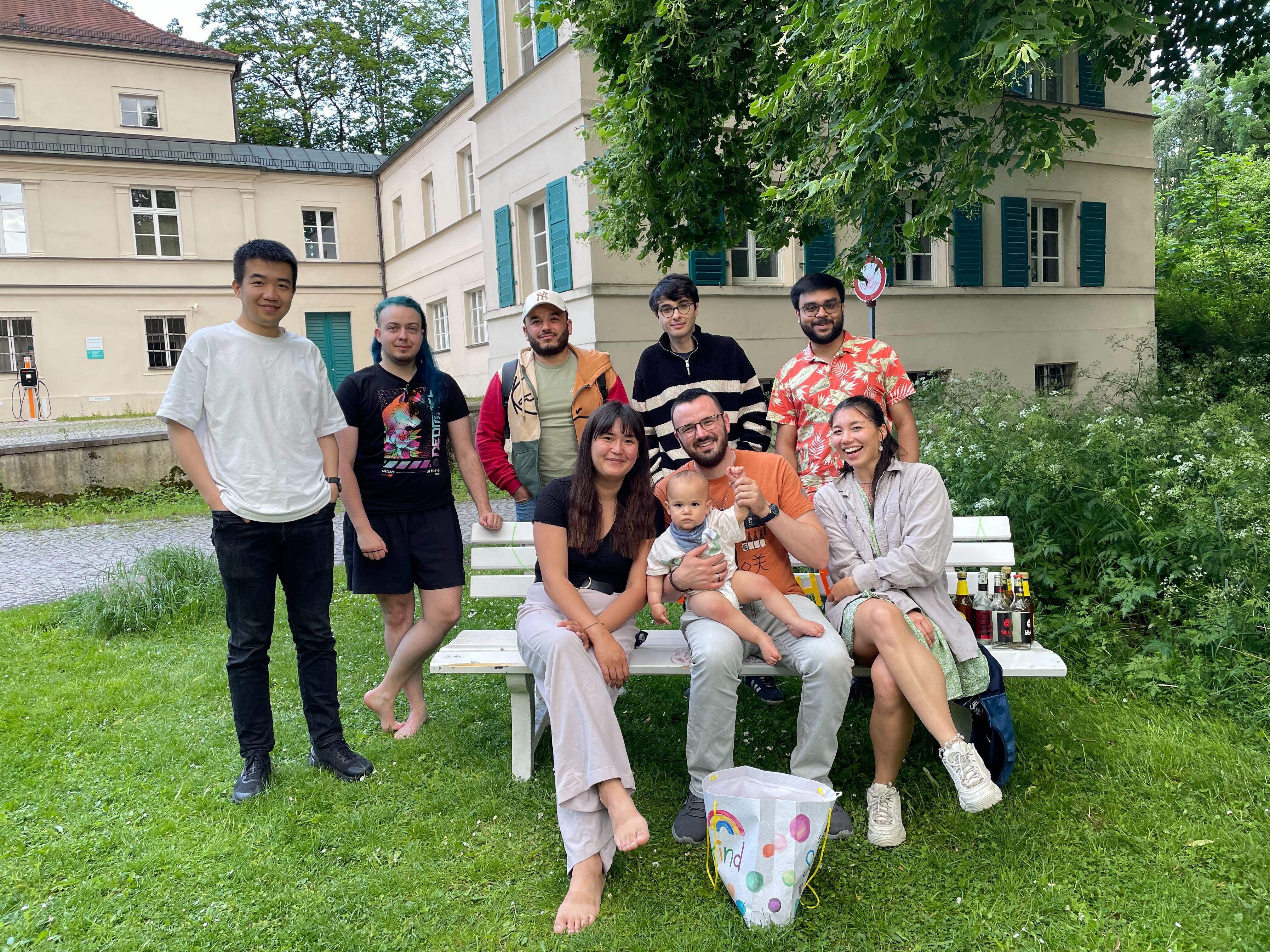
We also welcome Ishan Daga (bottom right) for his DAAD WISE internship in the group! Here's to a productive and enjoyable 2 months in Regensburg!
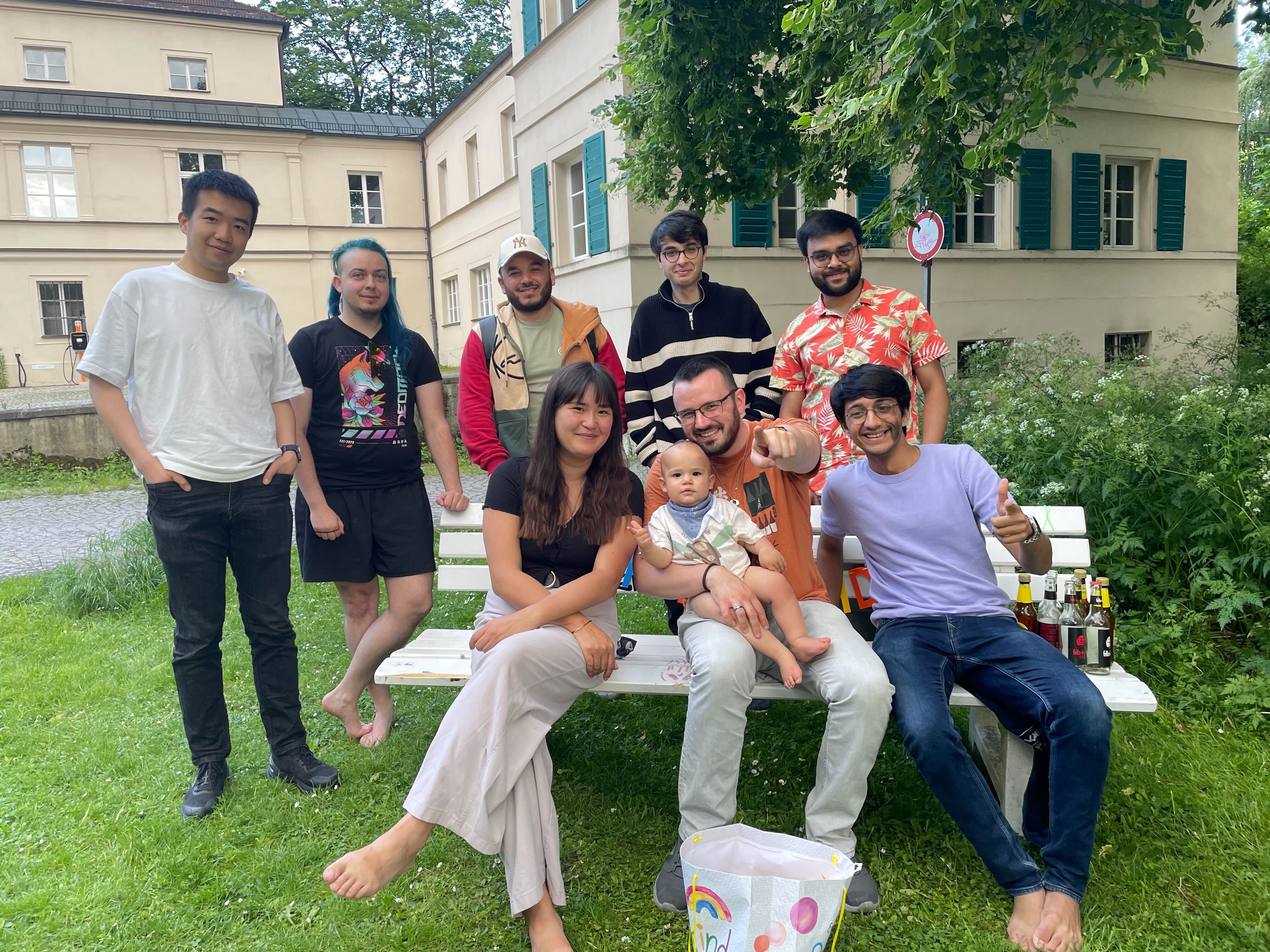
12.04.2024
JPB was grateful for the invitation to Kyung-Hee University in Seoul to give a talk, hosted by Boyoung Park - a rising star in flow (photo)chemistry! The architechture of University chemistry departments around the world tend to be frightfully ugly, but Kyung-Hee certainly bucks that trend!
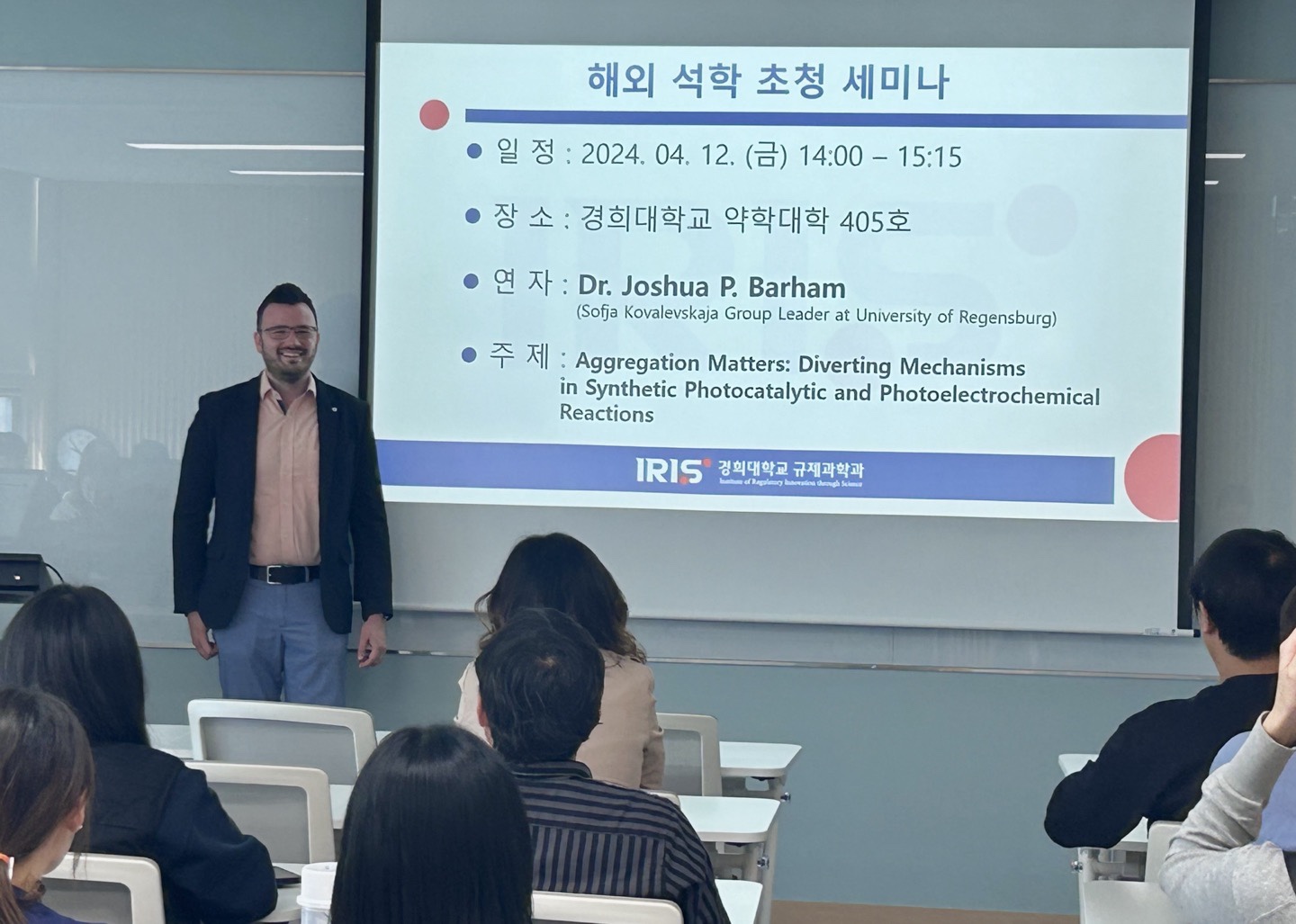
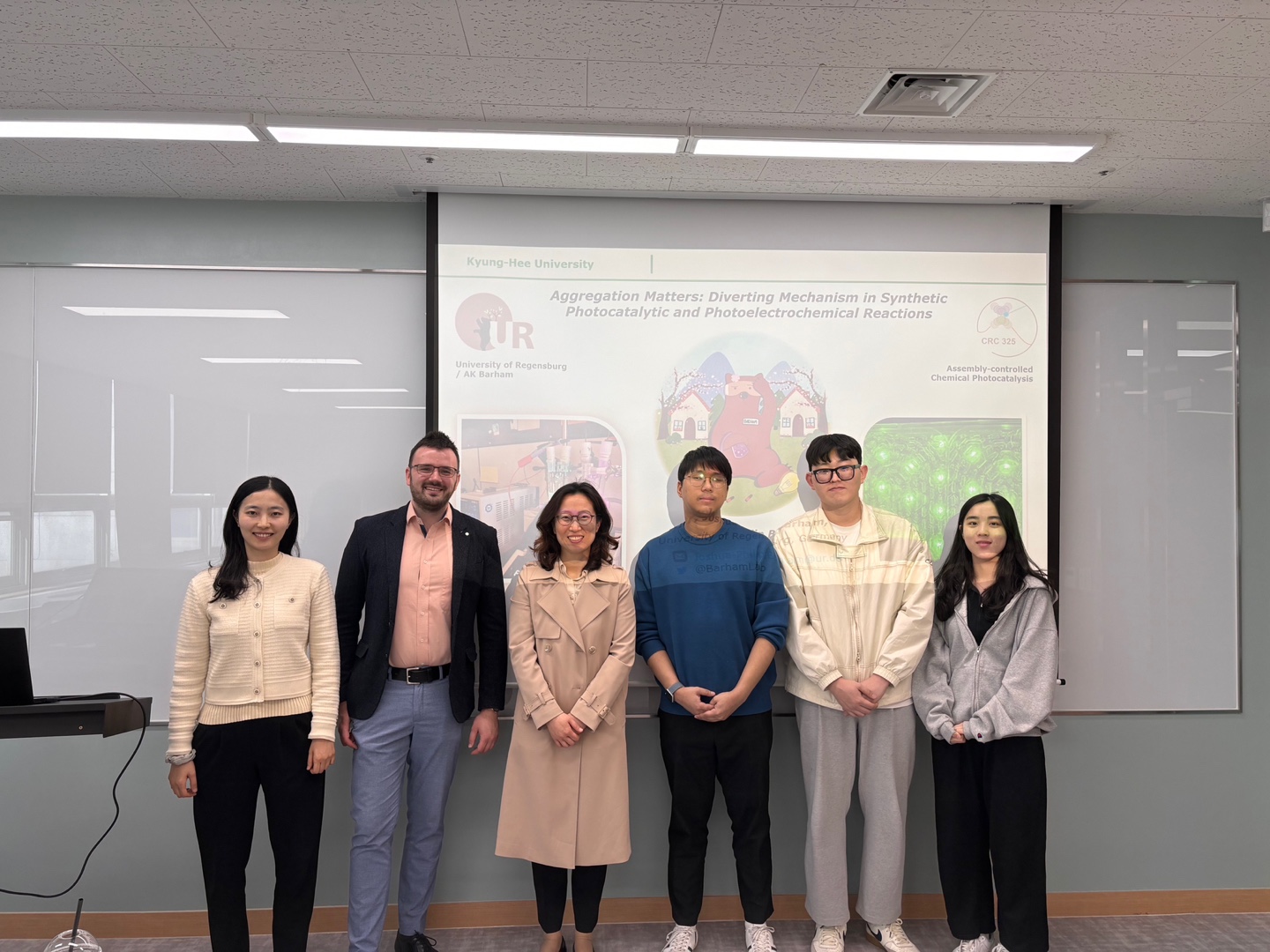
Before the talk, Boyoung took JPB to a mountain in the Bukhansan national park to enjoy a panoramic view of Seoul and the Bukhansan mountain.
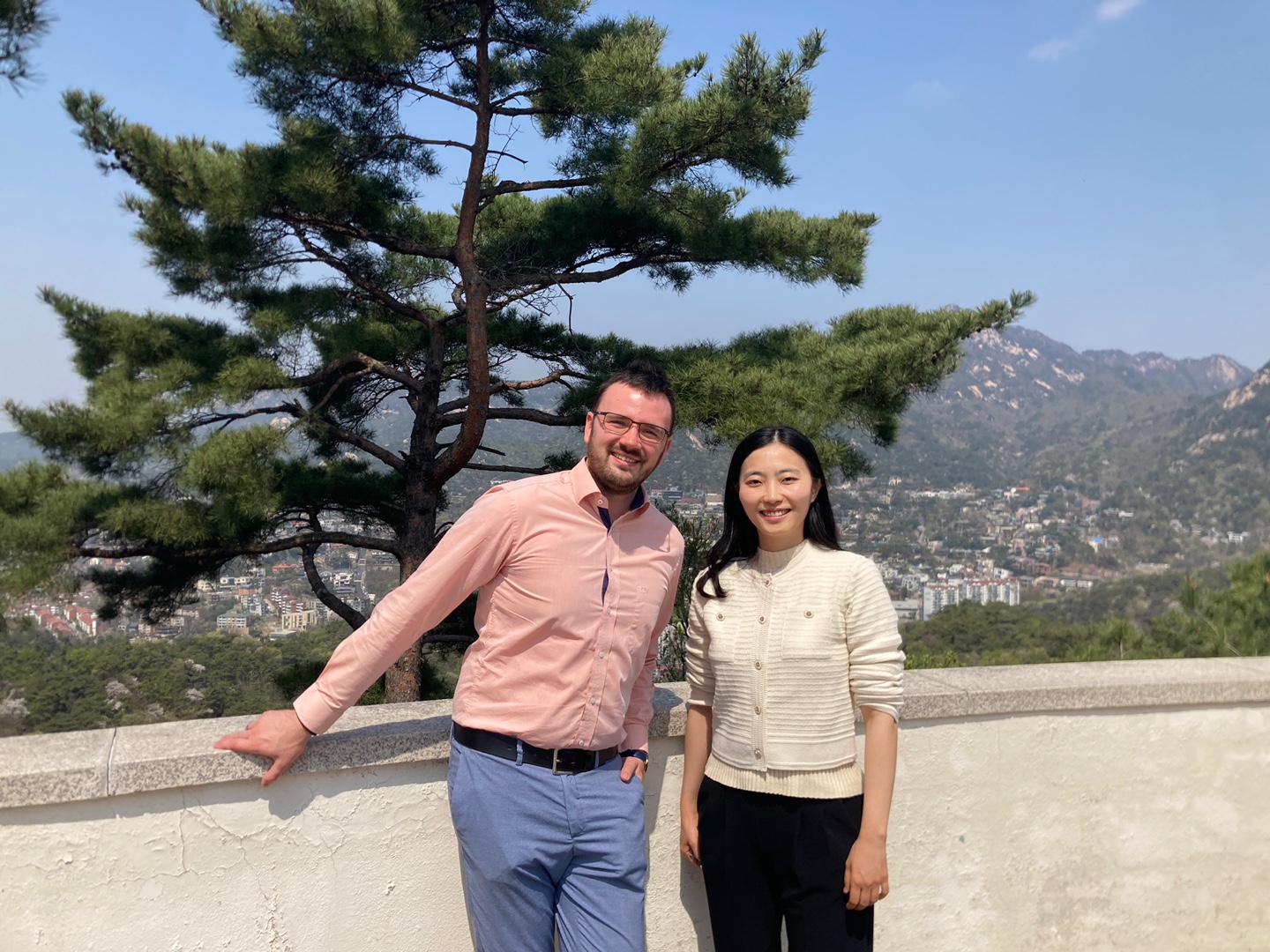
11.04.2024
JPB gives a talk at Chung-Ang University, Seoul. Glad to see so many chemists interested in aggregation effects in photochemical/photoelectrochemical reactions (full house!), and thanks for the engaging post-lecture discussions!
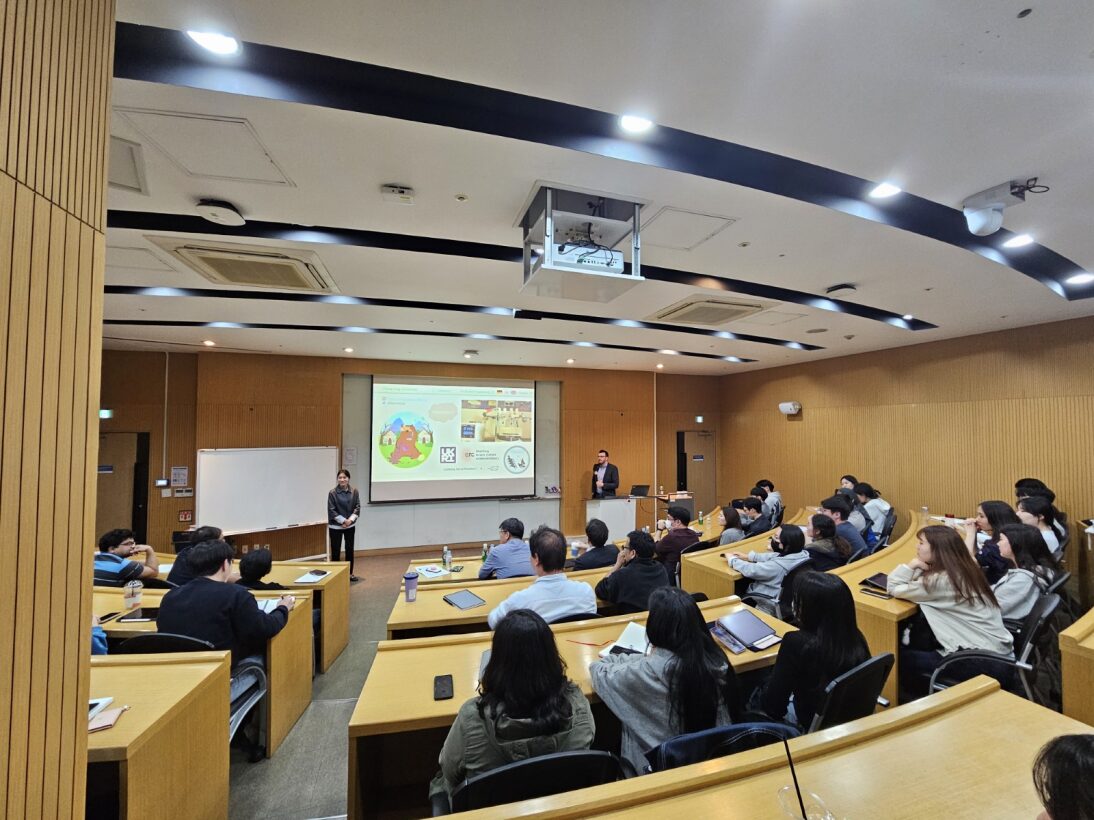
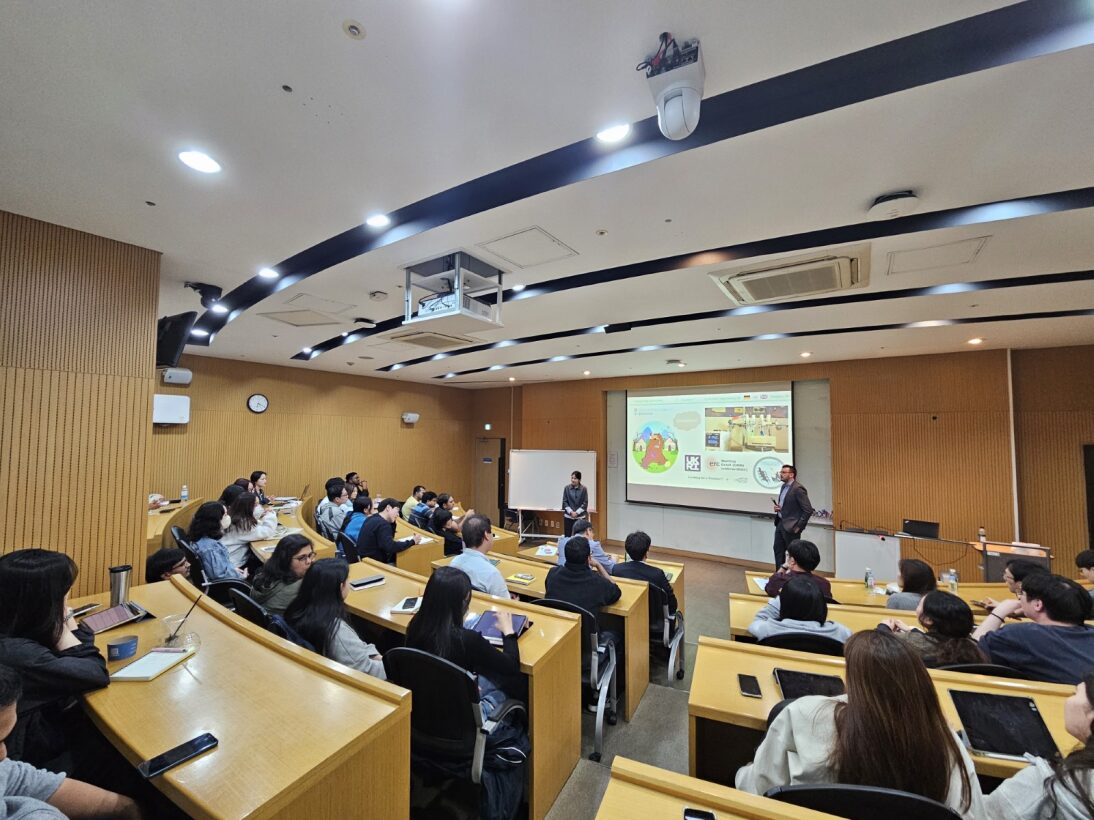
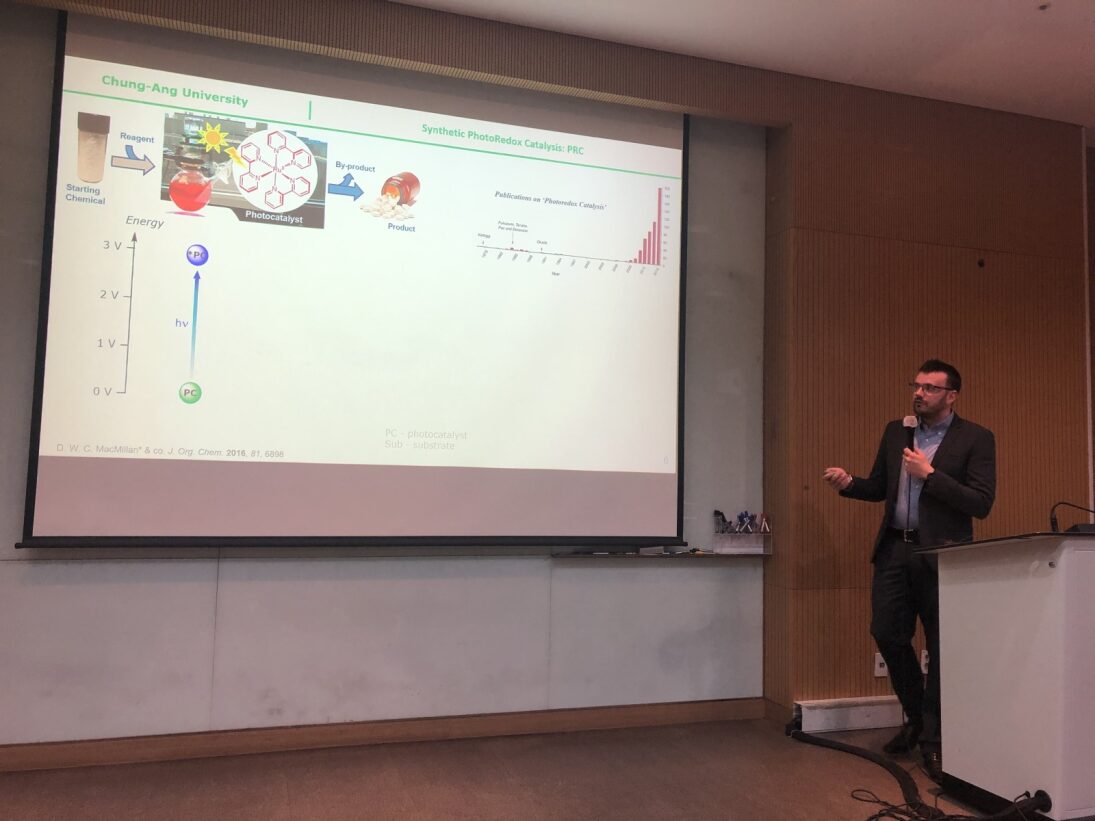
JPB was very grateful to Prof. Eun Jin Cho for hosting, and to renowned spectroscopist Prof. Youngmin You for making the effort to come over from Yonsei University.
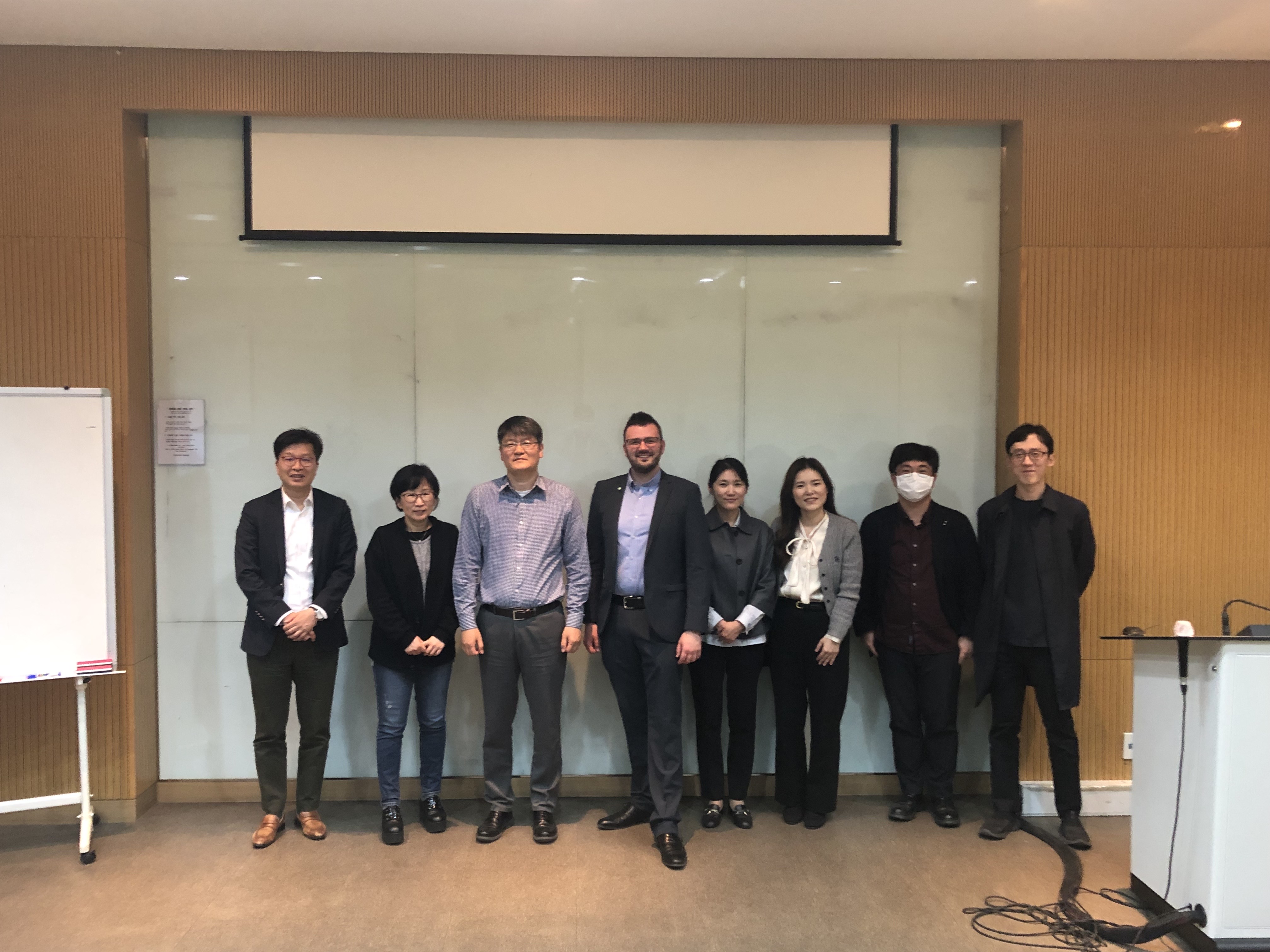
10.04.2024
New paper!
In Green Chem.
We report a novel, CO2-free hydrazine-free and reductant-free photocatalytic access to azines from oxime esters. Oxime esters normally react by EnT photocatalysis, extruding CO2 and radical (cross-coupling) recombining. We divert this to SET reactivity by a preassembling triarylamine photocatalyst, releasing unreactive acetate as a valuable, recoverable by-product. The resulting N centered radicals have no choice but to dimerize, affording azines in surprisingly high yields!
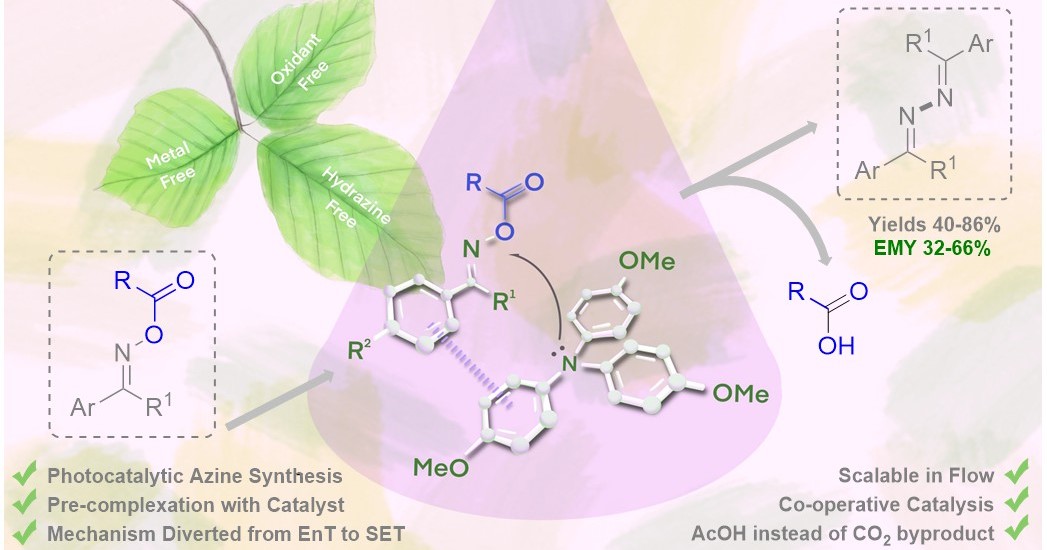
Classical azine access with hydrazine (toxic, explosive = rocket fuel!) needs high temperature for forcing aryl ketone condensations, well above the ignition point of hydrazine. Though we're limited to homodimers so far, our reaction is safe, high in atom economy & scalable in flow.
Intriguingly, we discovered that the triarylamine photocatalyst photodecomposes to a carbazole in the substrate's presence, yet fully in its absence. The resulting 65:35 mixture of triarylamine : carbazole gives a better reaction yield and rate vs either catalyst alone, as a unique example of co-operative photocatalysis!
A hot debate in the photocatalysis field is that the catalyst 'X' you put in the reaction may decompose to 'Y' as the active catalyst. Yet, everyone's foci is on 'is it X, or is it Y'? When actually, X+Y may BOTH play roles! Here, we reckon the carbazole up-shuttles electrons from the liberated acetate to the generated triarylamine radical cation that would otherwise be too endergonic.
A big congratulations to Jonathan for his first, 1st author paper and to the whole team for valuable contributions! We're excited to share even more examples of preassembling photocatalysis in the near future, that also strongly benefit sustainability aspects of reactions - stay tuned!
\(^(I)^)/
15.03.2024
Before returning from the DAAD Indo-German conference, JPB visited IIT Delhi to meet the group of Prof. Sudipta Raha Roy - a rising start in organophotocatalysis. Thanks for the stimulating discussions and lab tour!
It was great to catch up with Prof. Ravi Singh again as well, who JPB met in Nov 2022 at the DFG Indo-German conference.
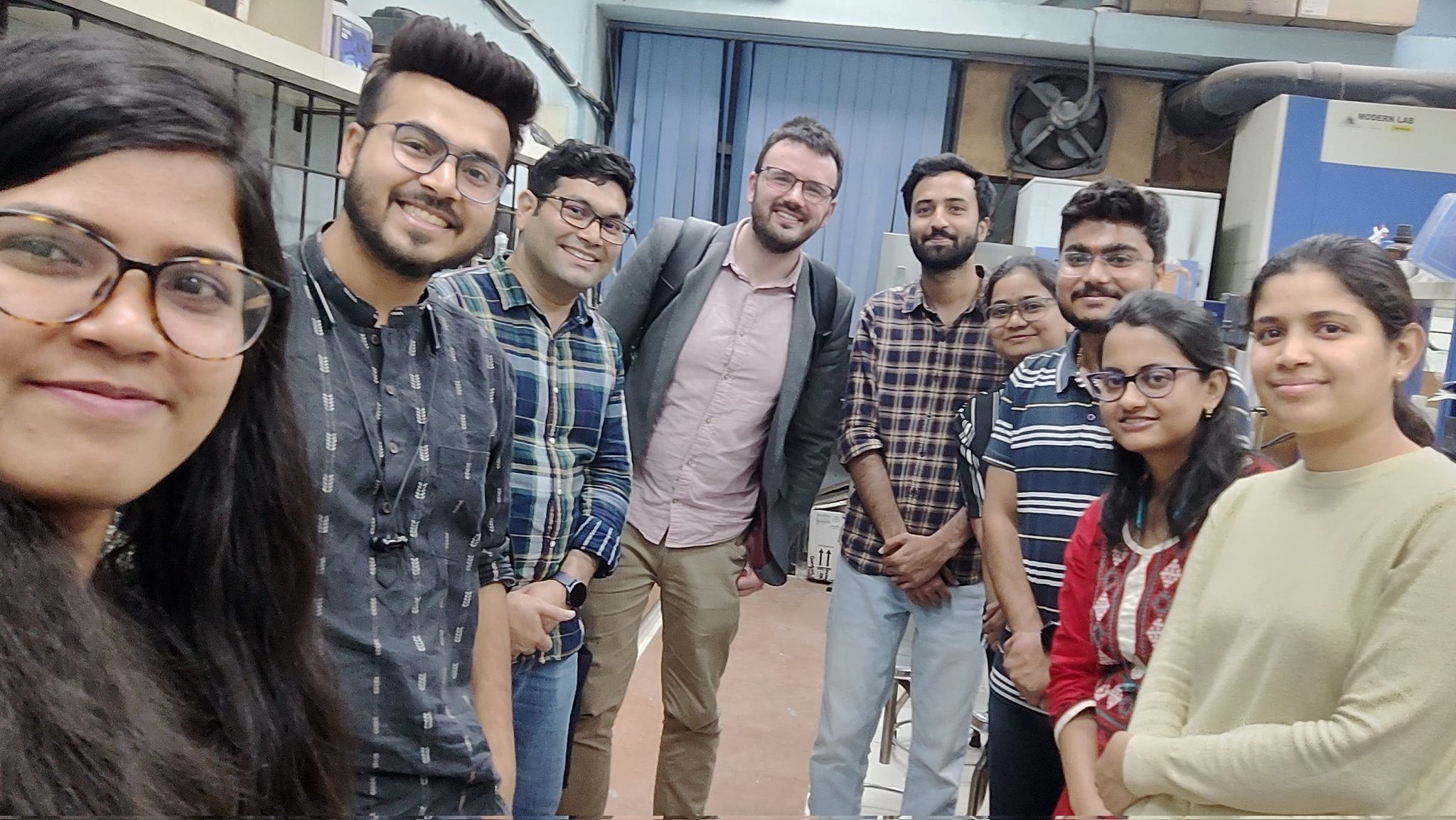
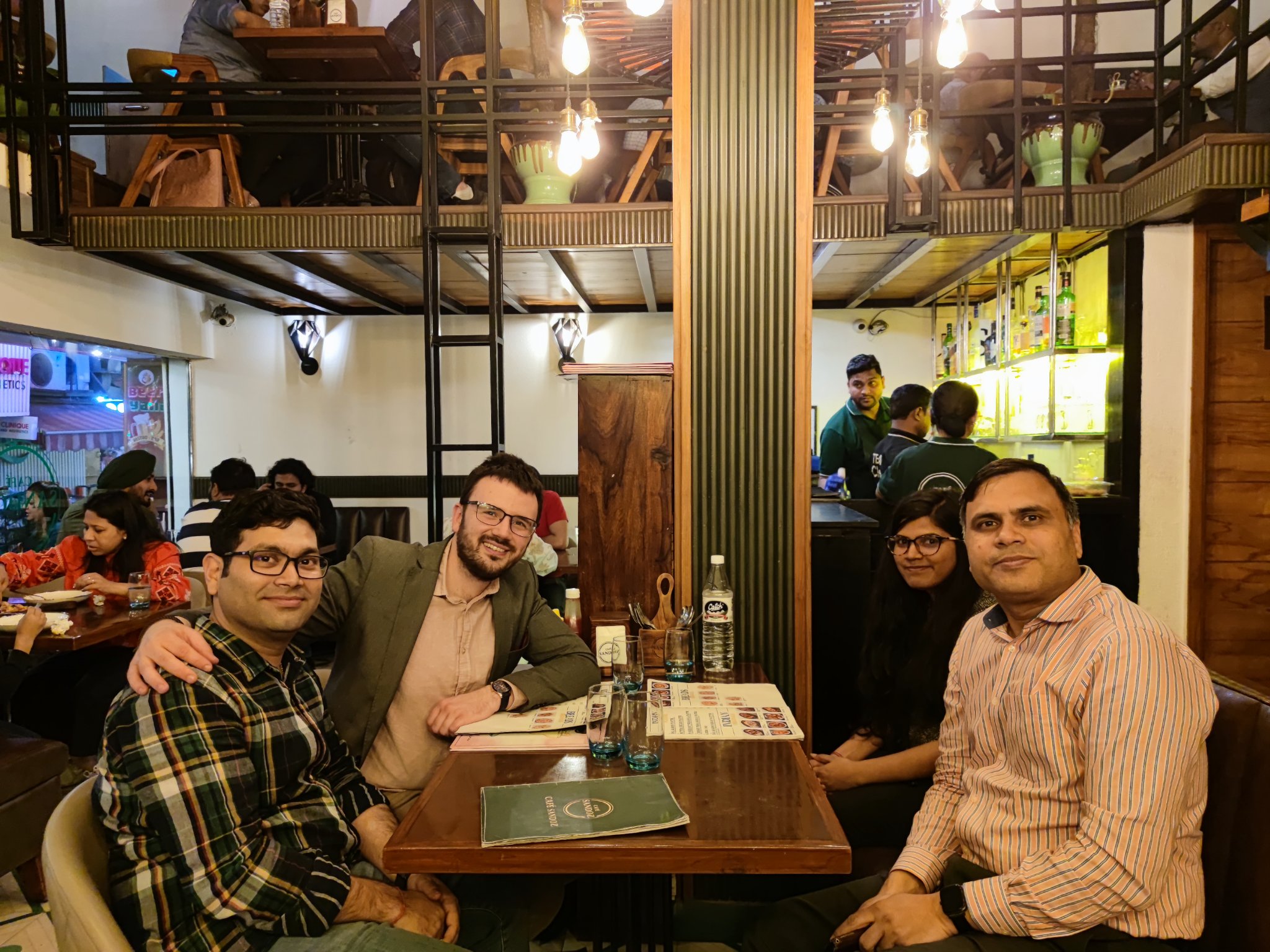
12.03.2024
JPB was invited to participate in a DAAD-organized conference in New Delhi, on Innovation and Global Co-operation for Sustainability. This was an inspiring and fantastically participant-led event.
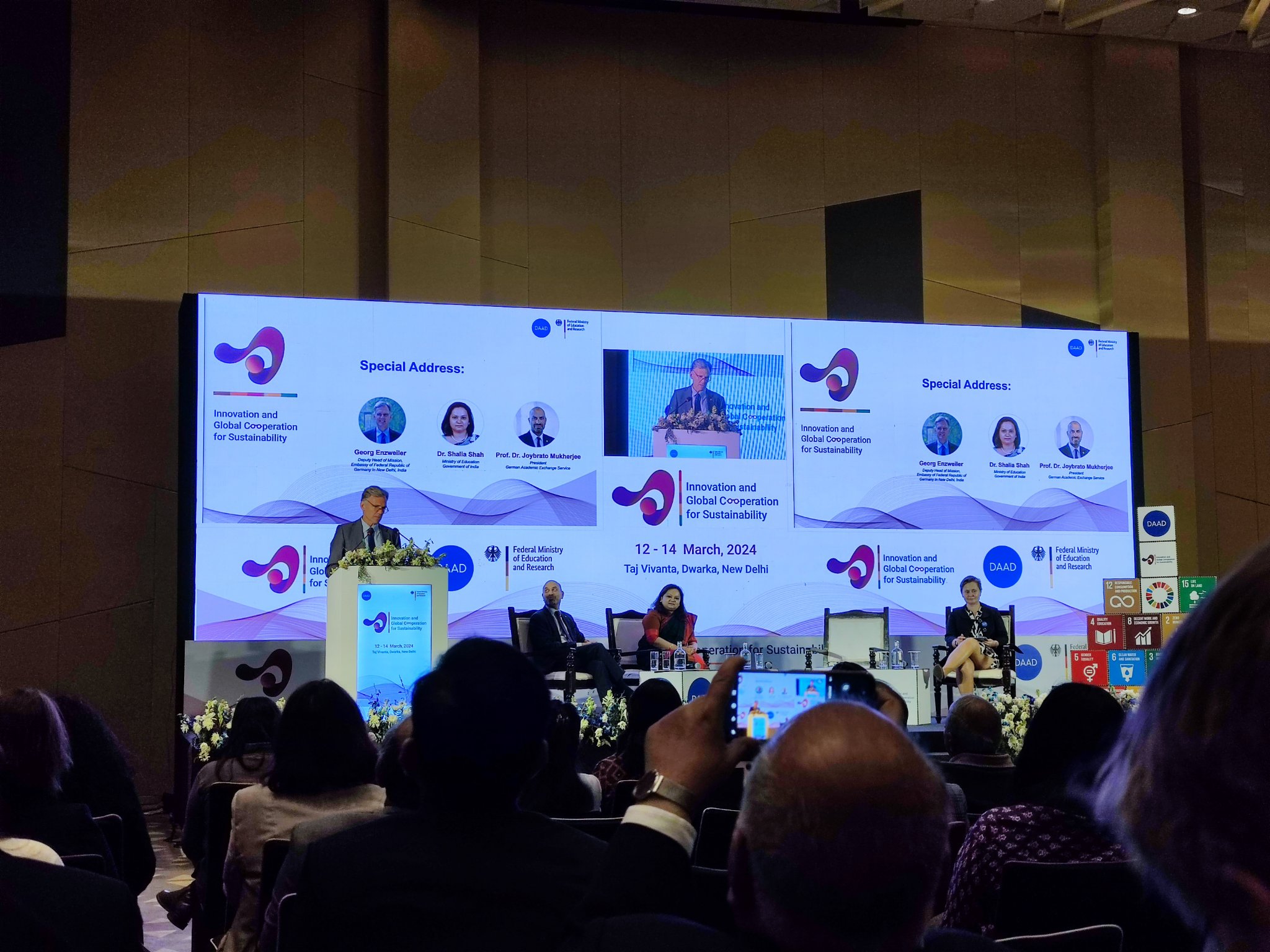
JPB enjoyed chairing a (spontaneous) panel on the pros/cons of academic rankings (India, Germany, U.K. etc) & how they might present challenges of inequalities in international collaboration. JPB also enjoyed giving a (invited) talk on the responsibilities of Higher Education Institutions to influence sustainable chemistry practices in academia and industry.
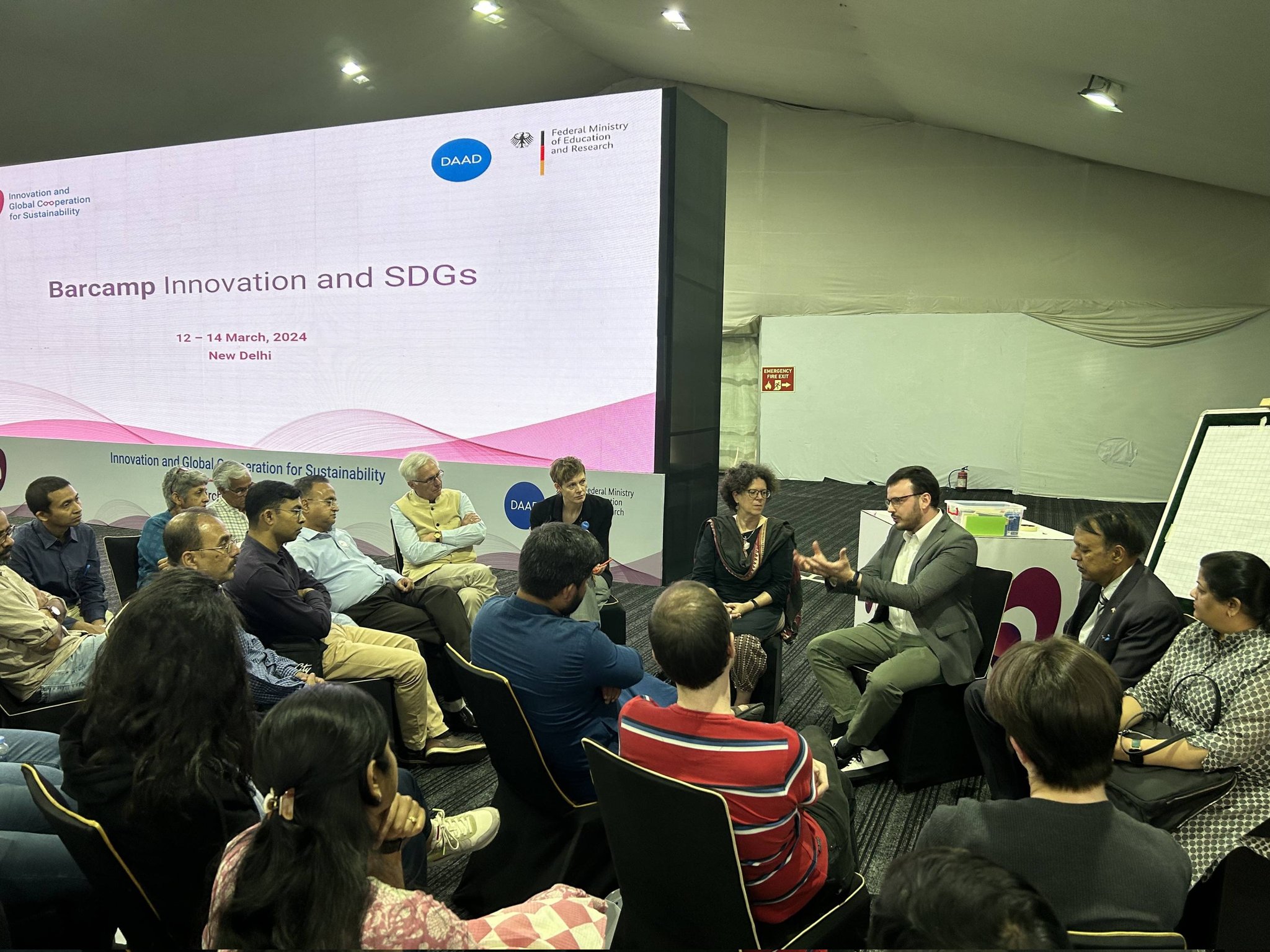
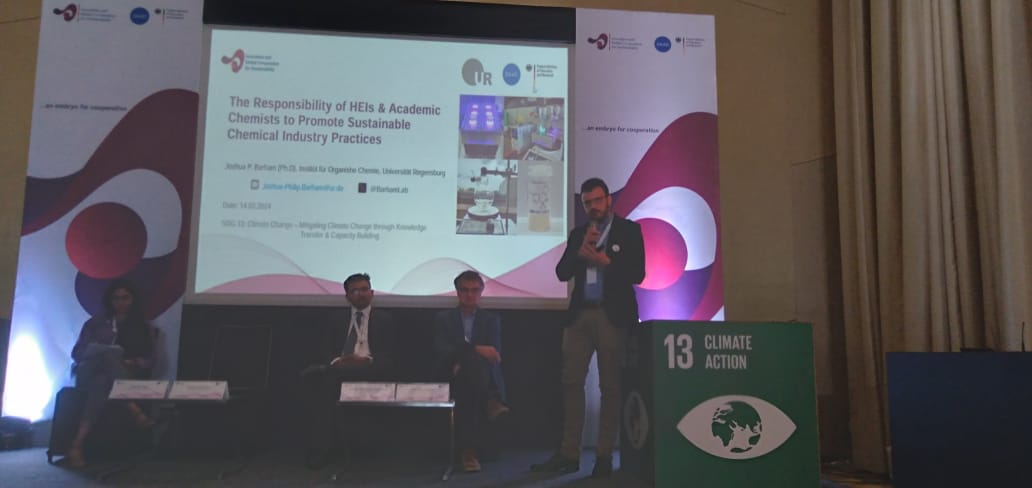
It was an additional bonus to be discuss some photocatalysis with students from Prof. Debayan Sarkar's group!
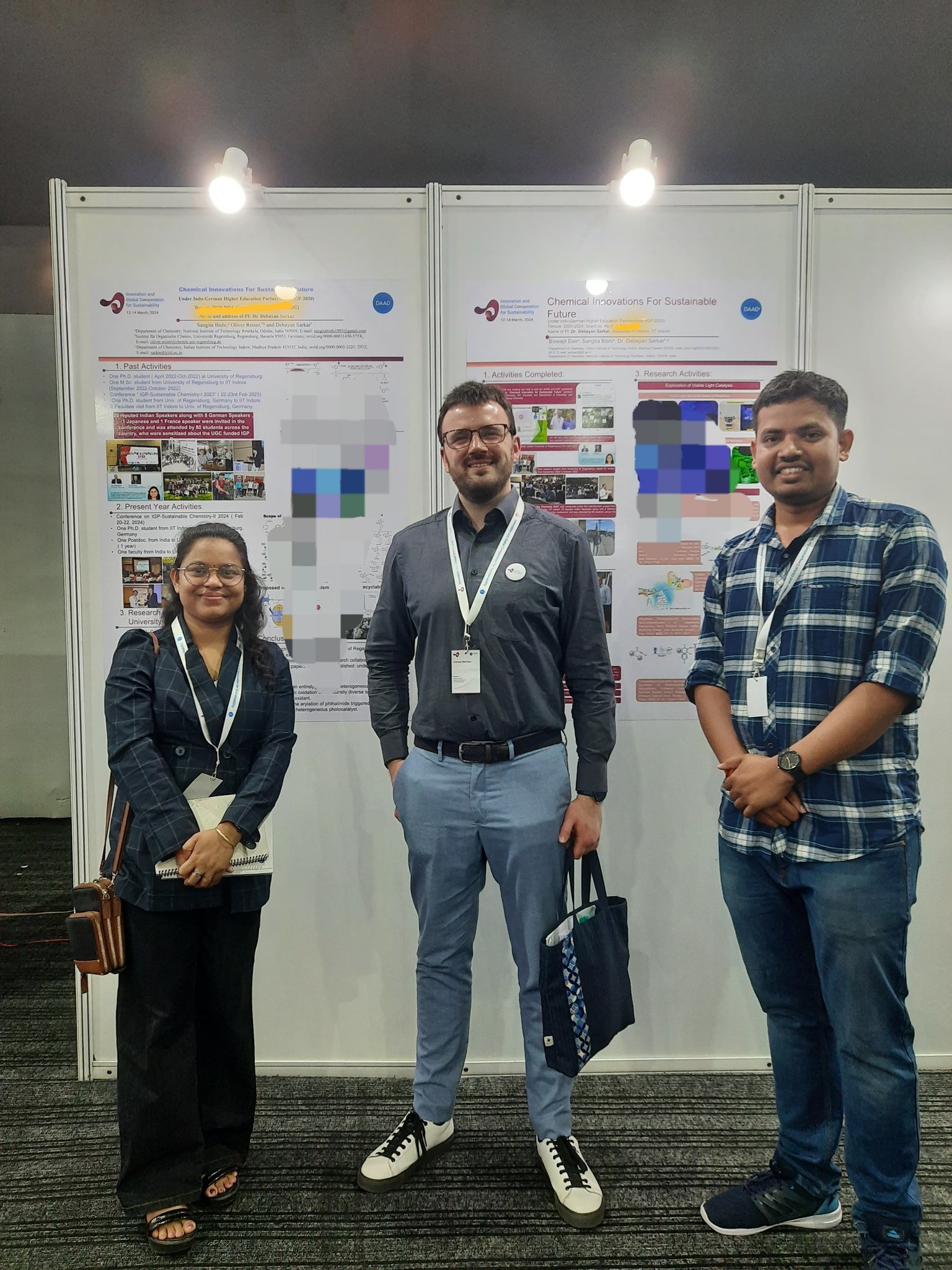
01.02.2024
As we enter the year of the Dragin, the dragons (electrodes) are already roaring in our photoelectrochemical cells, and already bring great fortune to strengthen the group:
Two new postdocs join the group!
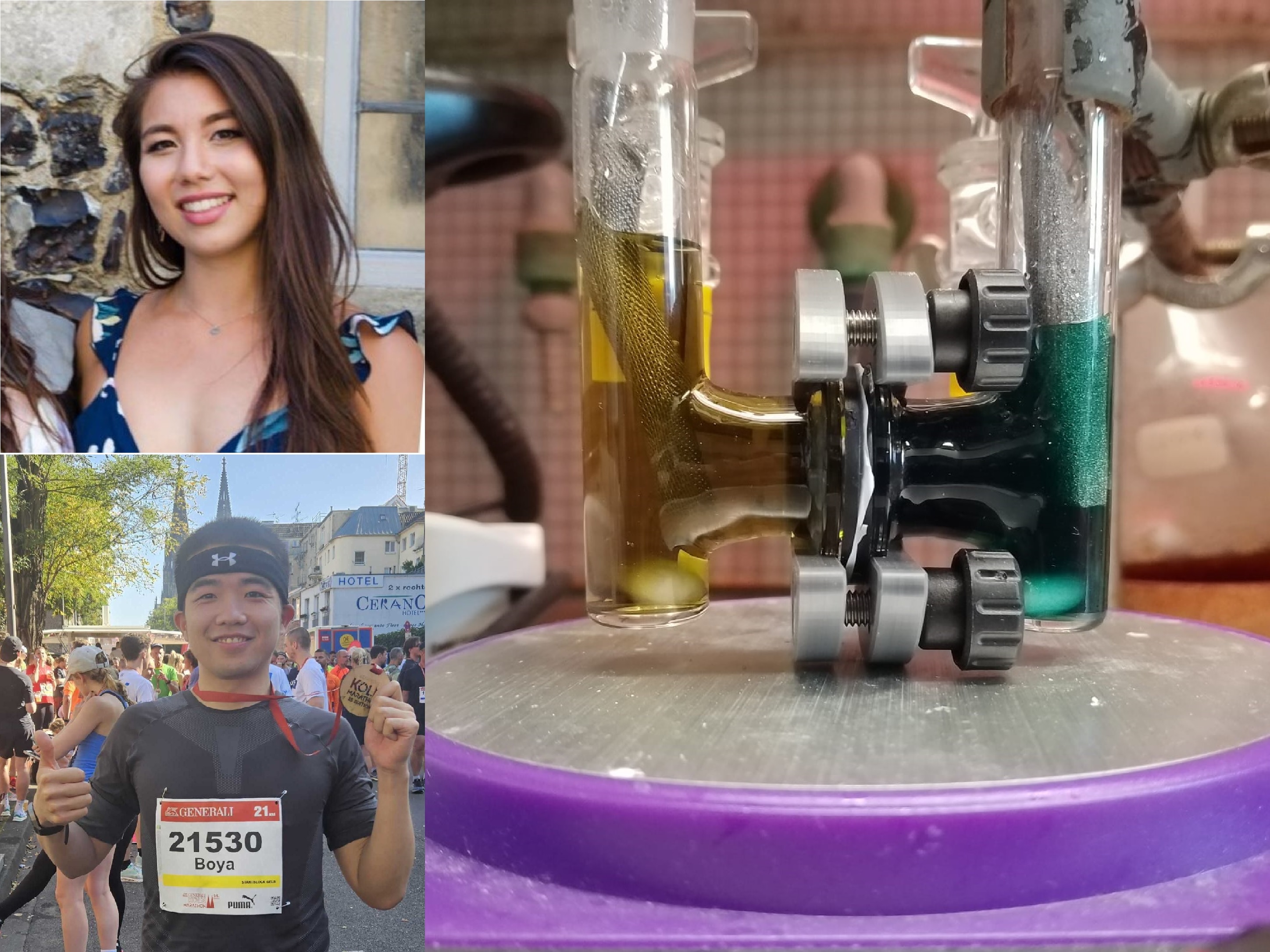
Cassie (top) joins us after completing her industry-based PhD on the GSK/Strathclyde PhD programme, under the supervision of Prof. John Murphy (following in Dr. Barham's footsteps, so to say!). She brings valuable expertise in radical chemistry and flow chemistry, and will be working on methodology for post-modification of pharma-relevant molecules using 'forgotten' reactivity, driven by photochemistry.
Boya (bottom) joins us with a Chinese Scholarship Council (CSC) Scholarship, having completed an initial postdoc stint at RWTH Aachen. Having graduated with his PhD from Sichuan University, he brings key expertise in transition metal-catalyzed processes for strong bond cleavages - particularly relevant given our group's recent Chem. Soc. Rev. review! Boya will be working on photoelectrochemical methodology for strong bond activations.
18.01.2022
New paper!
In a collaborative teaching exchange with the University of Strasbourg, we teamed up with Prof. Gilles Marcou to design an affordable, programmable and interactive photochemical flow reactor for undergraduate teaching labs.
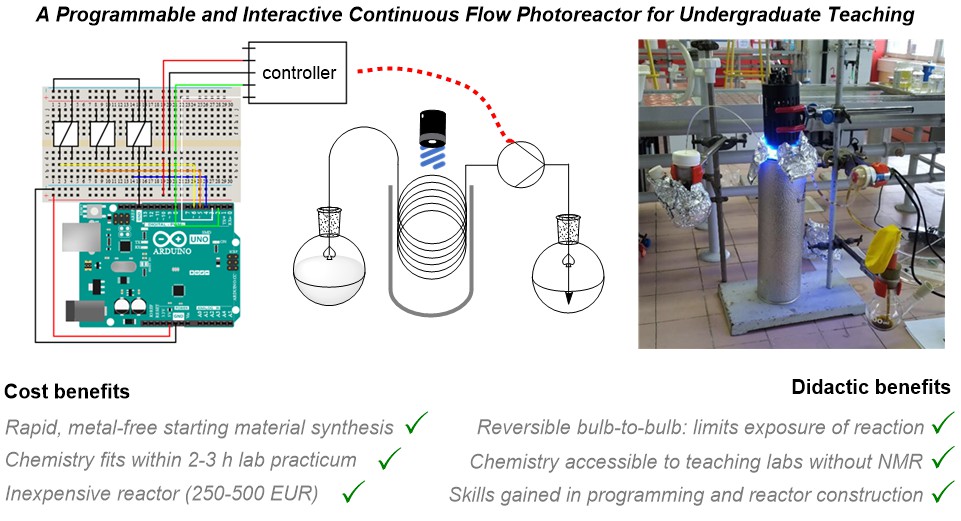
Flow chemistry is highly interactive for didactics, but the cost of commercial flow reactors (10s of k EUR) is prohibitive for most teaching laboratories, especially in public Universities. Moreover, it is of increasing importance to train chemistry students in reactor interaction (coding, automation) to prepare them with skills needed by industry in the future. As such, we designed a teaching exercise in which students build a photo-flow reactor using tubing/LED/dewar, and a peristaltic pump that is programmed by an Arduino chipset. It gives students practical experience in assembling the chipset, writing the program, assembling the reactor, and preparing/processing the wet chemical reaction all in a 2-3 h time slot of a typical teaching lab. Reactions flow bulb-to-bulb in a closed(safe) system, where students can flip the pump gear to reverse and continue the reaction if not completed, without risking further exposure. We tested the lab exercise on a class of ~30 students at Strasbourg, and with local students at Regensburg.
All parts for the reactor, supplier info and code to program Arduino are available in the SI file. We feel this contribution might prove a useful, low-entry barrier for University Chemistry departments to introduce their students to flow chemistry.
Congratulations to Michal! It was a pleasure for JPB to collaborate with Gilles.
\(^(I)^)/
07.12.2023
New paper!
We teamed up with Prof. Shunsuke Chiba's group in a quest to review historical and contemporary strategies for strong C-X (heteroatom) cleavages, using photochemistry, electrochemistry, or both!
The review is generally focussed on electron transfer activations. It is structured around the 'intimacy' of activation mode, from direct approaches like UV light direct excitation and electrolysis, to indirect approaches like photoredox catalysis and photoelectrochemistry. Rather than detailed analysis of the photocatalytic cycle or downstream chemistry, it focusses on the key activation and bond cleavage steps and the role of other reagents/additives that facilitate these steps.
We hope this account will be useful and timely as the focus of organic synthesis shifts to more and more inert substrate activations - in order to engage biomass and chemical waste - as feedstock chemicals for organic synthesis of the future!
Congratulations to Xianhai, Yuliang (Chiba group), Shahboz and Jonathan for their contributions! It was a pleasure to for JPB to collaborate with Shunsuke.
\(^(I)^)/
11.11.2023
Shahboz presents his research at the RTG meeting in the Alps
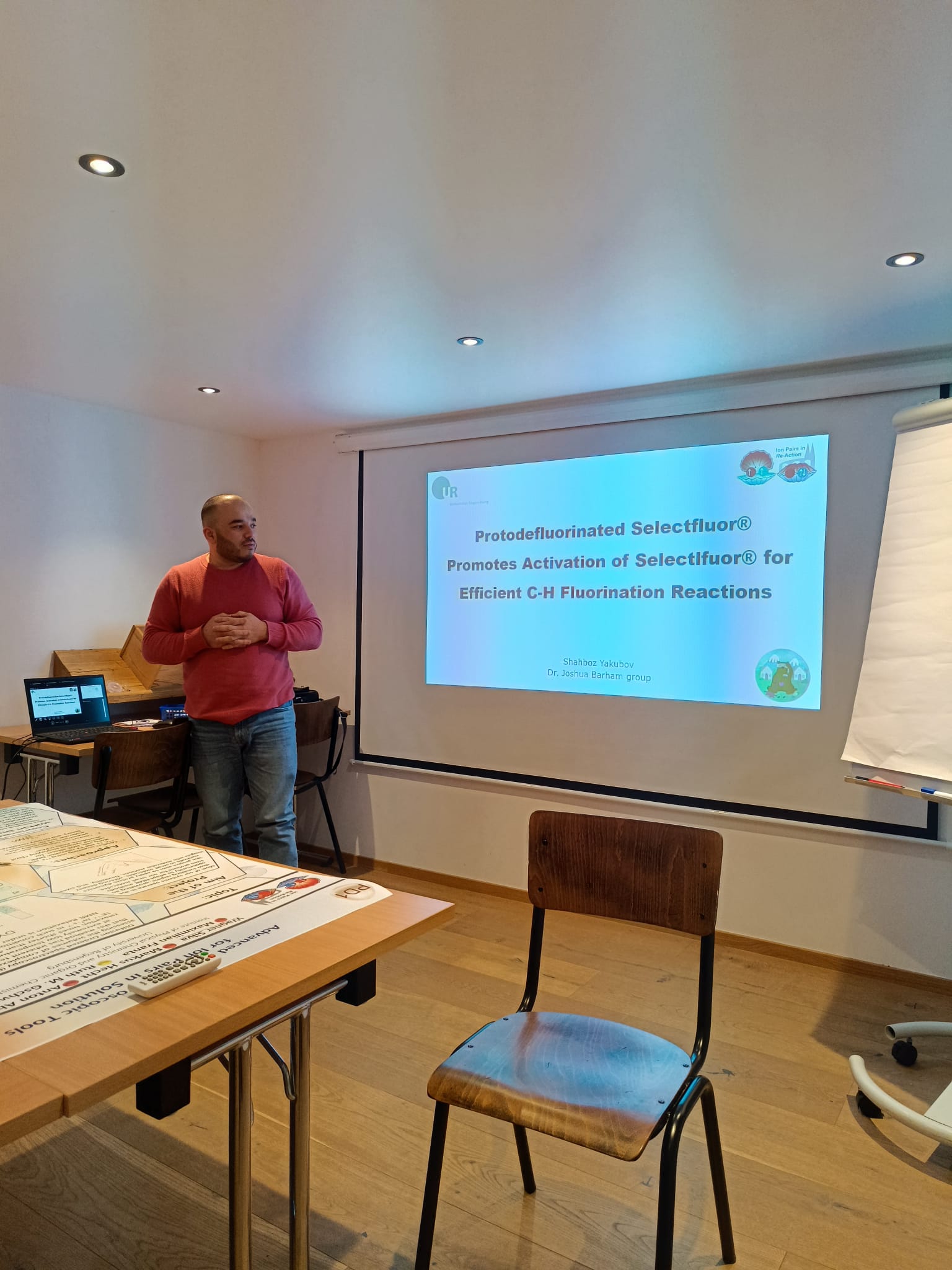
09.11.2023
Joshua presented the group's research at HHU Düsseldorf! Engaging discussiong with the faculty and students - especially enjoyed the discussions and lab tours with Drs. Markus Suta, Bernd Schmid & visiting Prof. Maryna Kornet, and to hear stories from Profs. Constantin Czekelius and Thomas Mueller about their academic journeys.
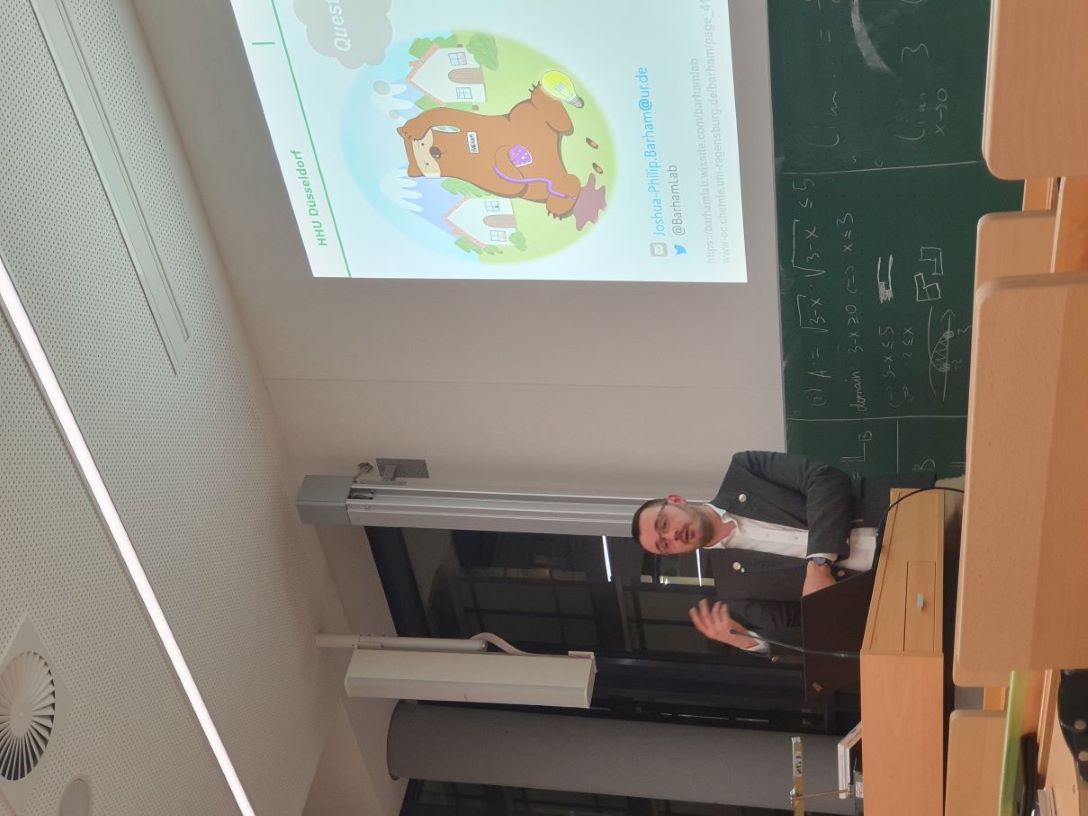
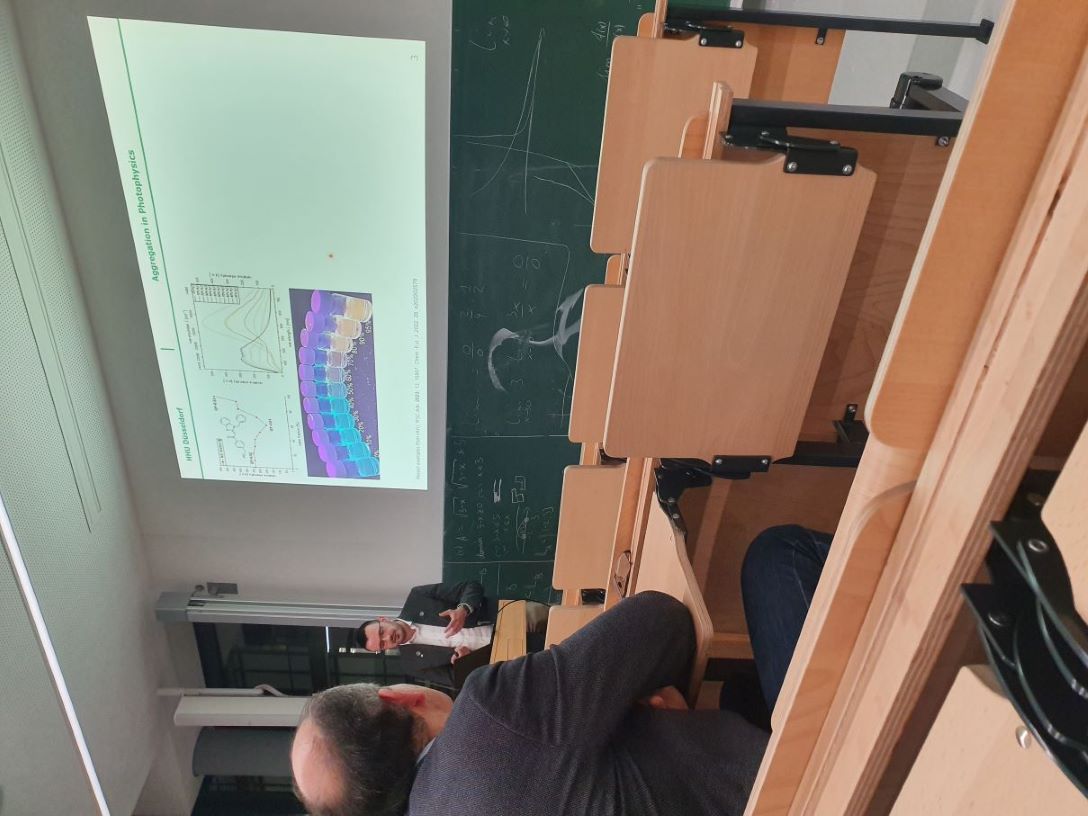
Visiting Düsseldorf, home to Europe's third largest Japanese community, was a particular privilege for Joshua with his postdoc background in Japan...
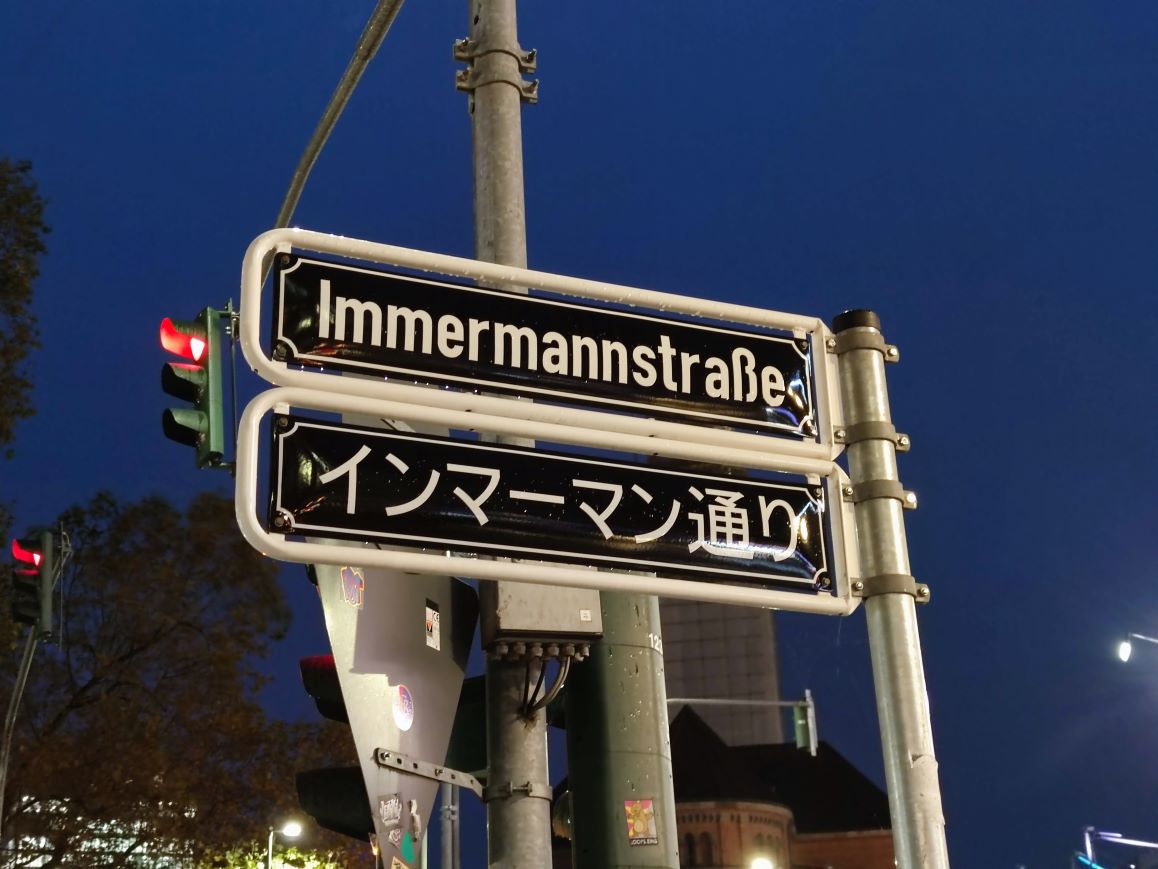
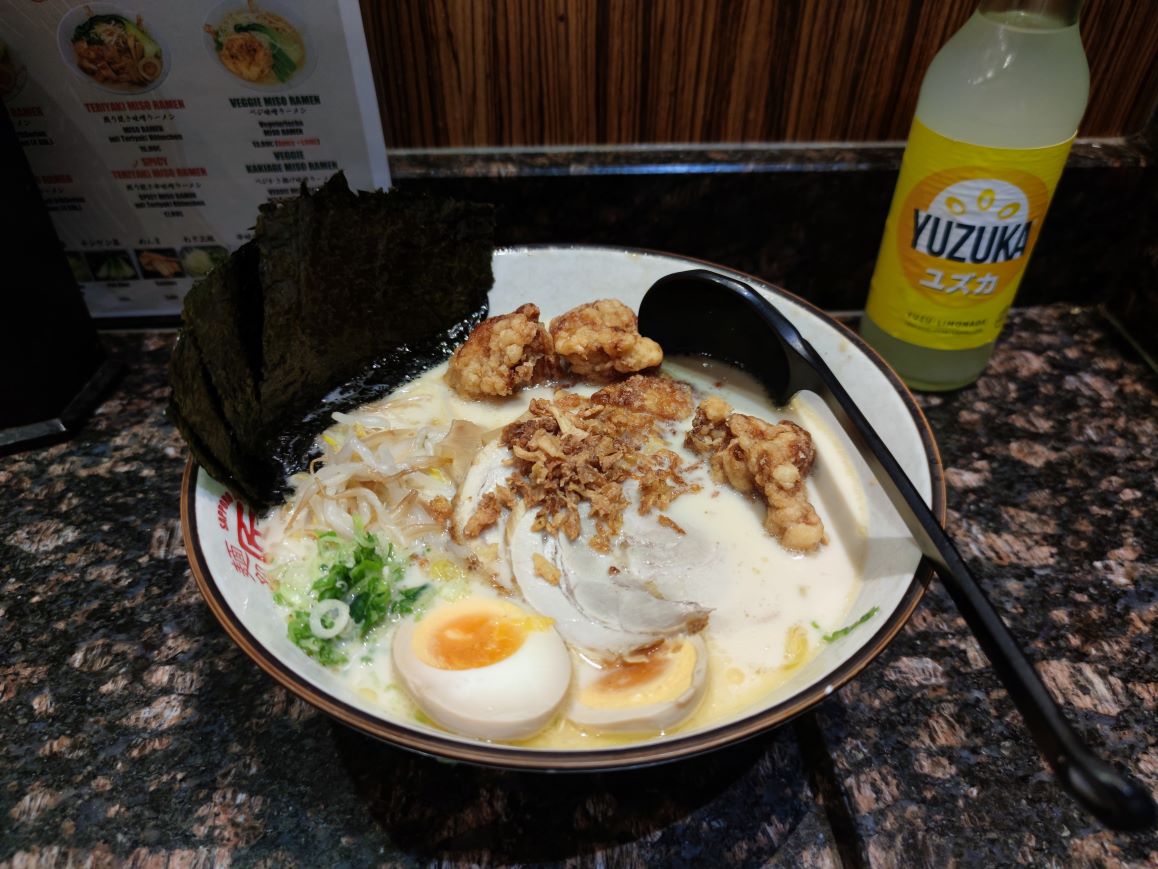
Thanks to Prof. Czekelius for the kind invitation!
08.11.2023
Daria, Gabriel, Joshua and Paolo attended the SPP2370 "Nitroconversion" meeting in the boutique Bellavue Rheinhotel nestled within the charming town of Boppard.
It was great to see where everyone was at after the first year; Daria and Gabriel co-presented a talk on their work with carbon nitride photoelectrodes, and brought a poster!
05.10.2023
Our Jaspreet presented her work at the GSK Postgraduate Symposium, an exclusive event for top quality PhD students working in organic synthesis methodology / medicinal chemistry to present her final year PhD research.
Alumni Mark also took a break from his 1st year of the PhD in Aggarwal lab (Uni. Brisol) to present his first-author organophotocatalytic flow N-CH3 oxygenation chemistry, developed as a SynCat Master student in our group with collaborators in GSK and published in 2022 in Chem. Sci.!
Great that they were both warmly welcomed by director Dr. Harry Kelly, one of Joshua's former mentors when on the GSK/Strathclyde industrial PhD programme!
I was told both presentations were well-received with many questions from the industry-strong audience - well done to both Jaspreet and Mark!
01.09.2023
The group bid farewell to Dr. Xianhai Tian, one of the founding members of our group since 2020, who has spearheaded our group's research efforts on photoelectrochemistry and organophotocatalysis. We have overcome many hardships and made many discoveries together!
All the best to Xianhai for his new position as he persues new challenges in biocatalysis within the Huang group at John Hopkins University!
01.09.2023
Well done to Jaspreet for her first big scientific conference 'in person' oral presentation of the PhD, representing the Bear Clan at EuropaCat in Prague!